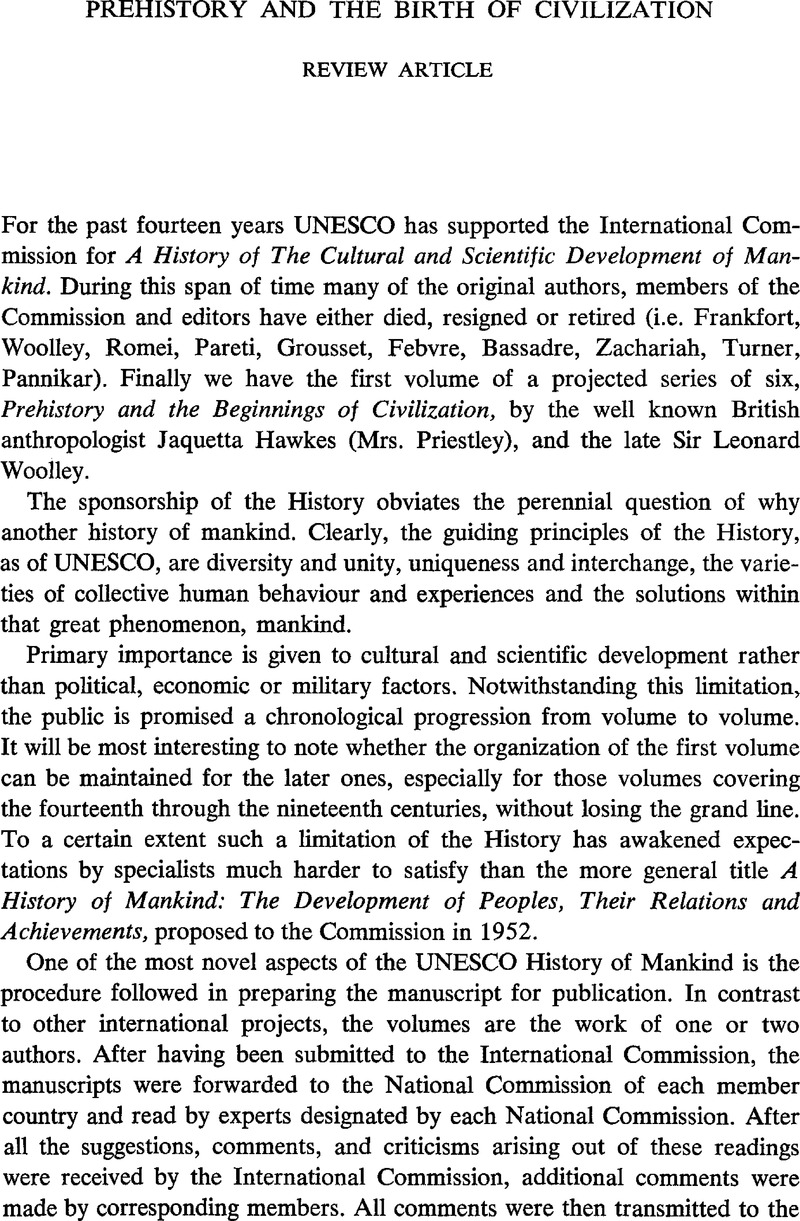No CrossRef data available.
Article contents
Prehistory and the Birth of Civilization
Published online by Cambridge University Press: 03 June 2009
Abstract

- Type
- Prehistory
- Information
- Copyright
- Copyright © Society for the Comparative Study of Society and History 1964
References
1 See the new Propyläen Weltgeschichte, ed. Heuss, A. and Mann, G., Vol. I (Berlin, Frankfurt, Wien 1961);Google Scholar and Historia Mundi, Vol. I, ed. Valjavec, Fr., Albright, W.F. et al. (Bern, 1952).Google Scholar
2 P. 106.
3 P. 106.
4 P. 107.
5 P. 47.
6 P. 49.
7 Bern, 1952, pp. 78–82.
8 P. 215.
9 P. 271 for instance.
10 P. 280.
11 Note 1, p. 214.
12 Comparative Studies in Society and History, Vol. V, No. 2 (01 1963).Google Scholar
13 Woolley defines civilization as meaning urban culture. Cf. pp. 359–360.
14 P. 255.
15 Cf. Lichtheim, Miriam, “Ancient Egypt, A Survey of Current Historiography”, Am. Hist. Rev. LXIX, 1 (10 1963), pp. 30–46.CrossRefGoogle Scholar
16 Despite later protestations to the contrary. On p. 501 he says: “the theory that a race as such should possess innate virtues and qualifications … is absurd”.
17 P. 367.
18 Pp. 385–386; p. 396.
19 Pp. 382–383.
20 Miriam Lichtheim, op. cit., pp. 35 f.
21 Woolley criticizes Gardiner, A.H., Egypt of the Pharaohs (Oxford 1961),Google Scholar in the text but neither the notes nor the bibliography prepared by the editors mention Gardiner.
22 Examples are writing systems and metallurgy.
23 Compare p. 272 and p. 516.
24 Compare p. 330 and p. 578.
25 Examples can be found on pp. 394, 462, 599, 632 etc.
26 Majumdar, R.C., The History and Culture of the Indian People, Vol. 1, The Vedic Age (London, 1951), p. 194.Google Scholar
27 What is meant here is clearly “decline”.
28 Cf. p. 411, Note 37.


